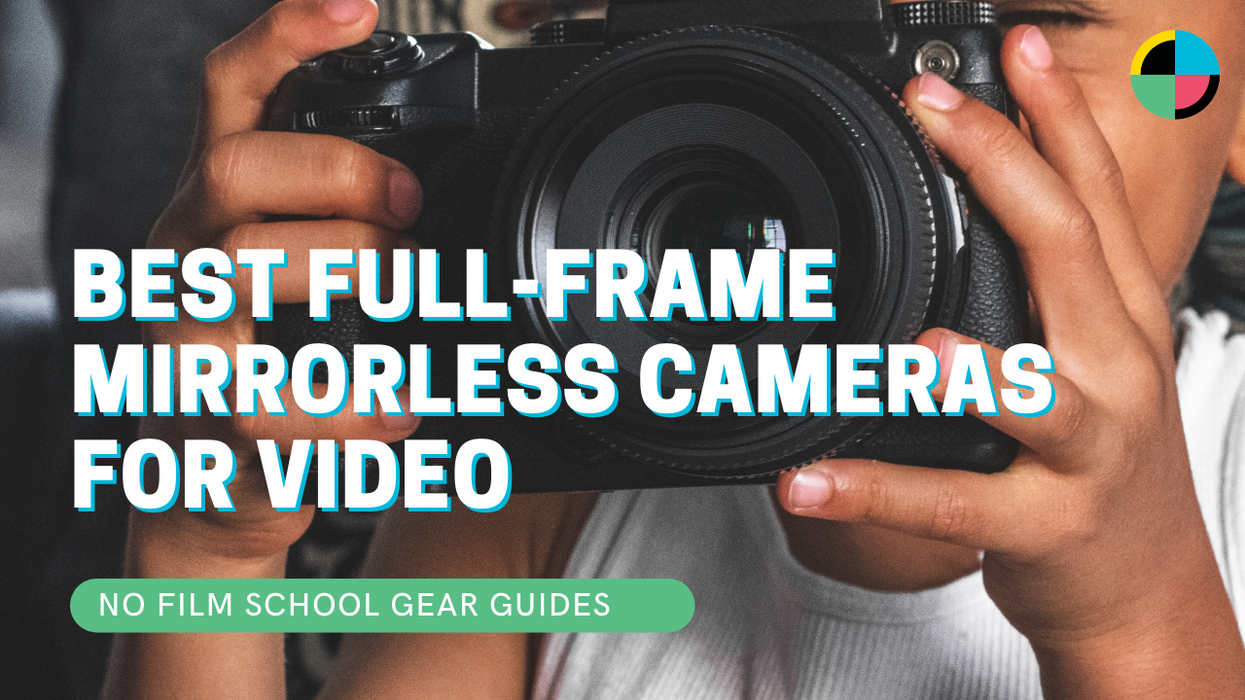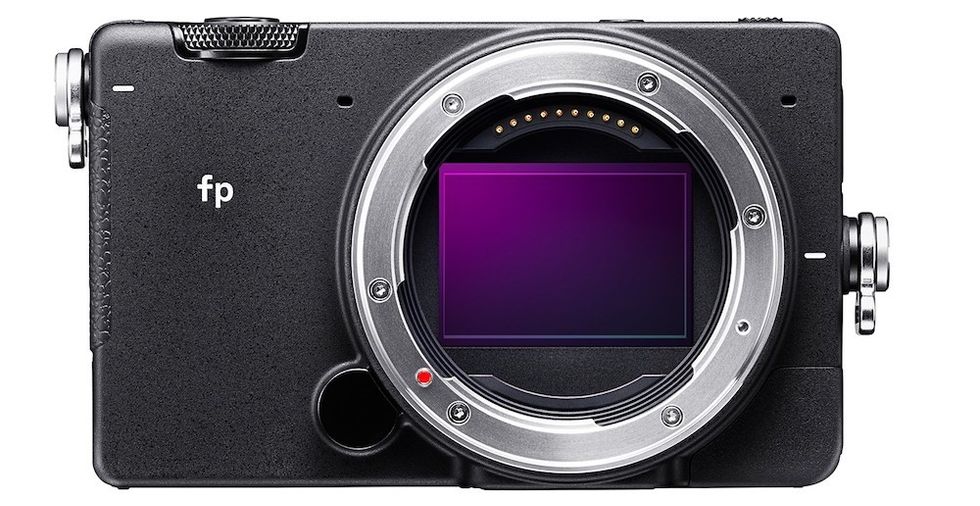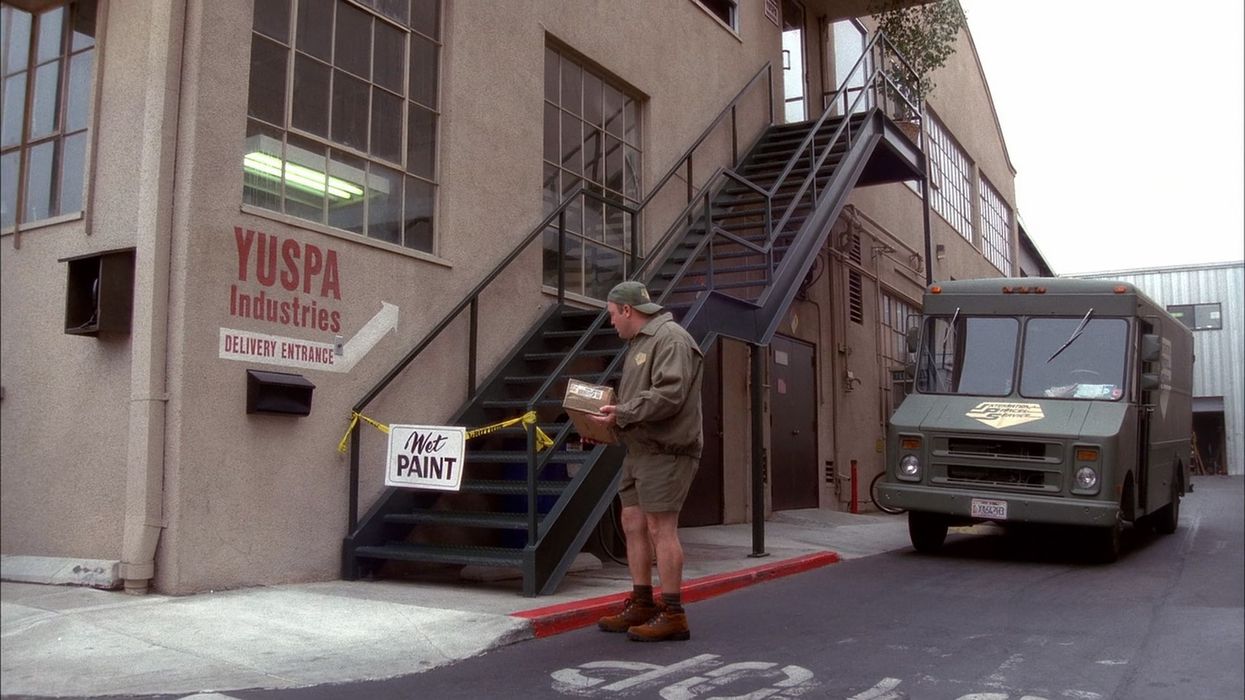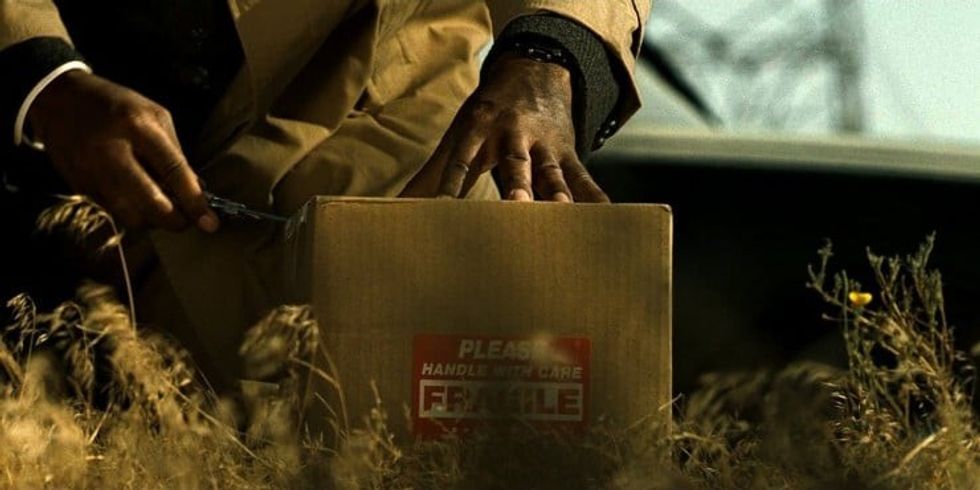Best Full-Frame Mirrorless Cameras For Video
Check out our best overall picks for full-frame mirrorless cameras, as well as several strong alternatives.

When it comes to mirrorless cameras, there are plenty of solid options to choose from. Whether you’re just starting out, looking to upgrade the image quality of your smartphone, or eager to shoot your first independent feature, a mirrorless camera is a great choice.
We also have gear guides for best mirrorless cameras for beginners and best mirrorless cameras for under $2,000 if those are the things you're looking for.
Today’s budget-friendly hybrid cameras produce some of the most alluring images thanks to advancements in sensor technology. Plus, their compact size allows them to easily fit into places larger cinema cameras cannot.
While identifying “the best” mirrorless camera is nearly impossible for some since it might ultimately boil down to personal preference, the type of work you do, or budget, No Film School has done the research in all our guides to help you identify which full-frame cameras stand out for their video capabilities in the market today.
Let's dive into the best mirrorless cameras you can buy right now.
Best Overall: Sony a7S III
The Sony a7S III is one of the most popular cameras among video shooters. You really can't go wrong investing in one. The Sony camera is going to provide you with great autofocus and low-light performance, decent color straight from the camera, and ProRes RAW workflows. The sensor technology really makes the a7S III shine and greatly improves image quality over the a7S II.
Sony invested a lot in its Exmor R sensor, which dates back to 2008, and has stuck with it for the a7S III, improving upon it further with larger photosites and a faster readout. Sony says the newly developed 12.1MP sensor has a 2x faster readout, and filmmakers will benefit from a sensor that provides a full pixel readout without binning.
The improved back-illuminated sensor has a better dynamic range while keeping a lower noise floor and low megapixel count. The combination of larger photosites and the back-illuminated sensor makes it more respective to light and is why Sony claims the camera has 15+ stops of dynamic range.
The new BiONZ XR has 8x more processing power than the previous BIONZ X which will minimize latency and improve movie processing. The next-gen engine allows for faster AF/EF and Face/Eye Detection processing, better color reproduction, and high-speed frame rates.
Sony is known for its low-light capabilities, and the a7S III carries on the tradition with an ISO range 80-102400 that's expandable to 40-409600.
While the in-body image stabilization isn't the best, it is available. Also unique to Sony is the ability to use Catalyst Browse as a way to stabilize your footage in post. Like many other cameras we suggest on this list, the a7S III also supports external ProRes RAW via an Atomos Ninja V.
But what truly pushes the a7s III over the edge is its lens support. Not only are there a ton of E-mount lenses, but lenses from third-party tend to roll out E-mount versions first. Until Canon RF mount becomes more widely available, E-mount has an edge when it comes to low-cost options. That said, if you're shooting PL lenses, it's a moot point as the majority of mounts have available adapters.
So if you're a video shooter or more of a hybrid shooter, the a7S III is most likely the camera for you if the cost is right.
Table of Contents
- Best Overall: Sony a7S III
- How We Picked
- Best Alternative: Panasonic LUMIX S1H
- Best High Resolution: Canon EOS R5
- Best Compact: Sigma fp
- Best Medium Format: Fujifilm GFX100
- Best Budget: Panasonic LUMIX S5
- Final Thoughts
How We Picked
When it comes to sensor size, mirrorless cameras fall into categories: Micro Four Thirds, APS-C, full-frame, and beyond.
Today, each major camera manufacturer is developing full-frame options for the marketplace. Now, this isn't to say full-frame is better than APS-C or MFT, but it's important to recognize trends so that you, the consumer, understand where the industry is headed. That said, there are benefits to full-frame sensors (and beyond) that generally include better low-light performance.
For this list, we looked at full-frame mirrorless options while considering the overall video performance and capabilities. These cameras represent the cutting edge of imaging innovation and are the who's who in the mirrorless world right now. While most mirrorless cameras are popular because of their hybrid capabilities (still and video) we mainly looked at the video capabilities.
That said, many of the cameras on the list can be considered "the best overall" especially if you prefer more reliable autofocus, better in-body image stabilization, or a ton of lens support. So understand each category with a grain of salt.
Best Alternative: Panasonic LUMIX S1H
A Step-by-Step Guide to Mastering LUMIX DC-S1H

Photo by mojtaba mosayebzadeh on Unsplash
black dslr camera on brown wooden table
Th full-frame LUMIX S1H mirrorless camera offers an outstanding combination of image quality, functionality, and usability.
- 6K, 5.9K, 4K DCI, 4K UHD
- 4:2:2 10-bit Sampling
- In-Body Image Stabilization
- V-Log, ProRes RAW
- Anamorphic Shooting
- Autofocus
- Lacks Pro Audio Inputs
- Higher Priced
When it comes to purely looking at video performance, it's hard to beat the Panasonic S1H. The Netflix-approved camera is a full-frame beast, and when paired with an Atomos Ninja V external recorder, it unlocks ProRes RAW recording.
The mirrorless camera can record up to 6K, 10-bit video at 24fps in a 3:2 aspect ratio, and in 4K in a 4:3 ratio thanks to its 24.2-megapixel full-frame CMOS sensor. The S1H also features Dual Native ISO to reduce noise in low-light scenarios to keep image quality clear.
Dynamic range tests have shown the camera getting about 13+ stops of usable dynamic range, and if ProRes RAW is unnecessary to your workflow, V-Log/V-Gamut help capture the full range of shadows and highlights.
The S1H also includes options for High Dynamic Range (HDR) in Hybrid Log Gamma (HLG) 4:2:2 10-bit internal recording and HDMI output, plus anamorphic 4:3 modes.
Users are free to add creativity to their film using several different recording modes including Variable Frame Rate (VFR), High Frame Rate (HFR), Night, and Timelapse shooting modes. Variable Frame Rate allows for cranking footage up to 30x its normal speed to create a smooth slow-motion effect. Or users can opt for High Frame Rate, which can record up to 120 frames per second to be slowed down in post-production.
The camera also features the L-mount system, which opens it up for use with a ton of native lenses or it can be easily adapted to use with PL lenses.
Best High Resolution: Canon EOS R5
Canon EOS R5

The R5 combines resolution, speed, and RAW video formats that make it one of the most versatile full-frame mirrorless cameras available.
- 8K Resolution
- RAW, Oversampling
- In-body Image Stabilization
- Autofocus
- Overheats
- No Pro Audio Inputs
- 4K 120p to CFexpress Only
When Canon introduced its first full-frame mirrorless camera, the RP, the uproar was that 4K UHD recording had a crop. Canon went back to the drawing board and released the R5 and R6, and the headline was the R5 offered internal 8K RAW recording. That alone is quite an accomplishment on such a small form factor.
But it didn't come without caveats. Both the R5 and R6 overheat when recording for an extended period of time, and even after Canon addressed the problem with firmware updates, it didn't eliminate the issue entirely.
Even with its problems, it produces some of the best images available. And as a stills camera, it's hard to beat.
The R5 has a brand-new single plate 45MP CMOS sensor that combines a cutting-edge DIGIC X image processor. The sensor touts a traditional full-frame size of 36x24mm and a 3:2 aspect ratio that packs in approximately 47.1 total pixels. The size of the pixels is 4.4 µ (microns). The sensor has a non-detachable low pass filter to suppress moiré and color distortion, and like other Canon sensors, it's self-cleaning upon shutdown.
The camera's ISO ranges from 100-51200 in 1/3- or 1-stop increments and can be expanded from 50-102400. However, when shooting HDR (HDR PQ) the ISO is not expandable.
The R5 can record uncropped 8K RAW video, but it does a lot more. What Canon managed to do is develop a CMOS sensor that oversamples 8.2K to produce 8K or high-quality 4K images. (Or what Canon calls a 4K High-Quality Mode.)
The EOS R5 has video recording formats and frame rates for 8K DCI, 8K UHD, 4K DCI, 4K UHD, and full-HD. Compression is either RAW, ALL-I, or IPB in either 8/10-bit 4:2:0/4:2:2 H.265/HEVC or H.264 AVC.
Canon Log is available as well as the HDR shooting mode HDR PQ, which is 10-bit 4:2:2 with a Rec.2020 color gamut. Both Canon Log and HDR PQ can be turned on or off in different shooting modes.
For autofocus, EOS R5 takes cues from the 1D X Mark III. When shooting stills in live view mode, the camera will automatically select 1,053 zones across the screen, while you can manually select 5,940 points which cover 90% width and 100% of the height. For movies, 819 zones are automatically selected. Autofocus using the center point is rated down to EV -6 with an F1.2 lens, except for lenses with a Defocus Smooth (DS) coating. You can expect the Dual Pixel AF to fare well in low light.
The R5 does have IBIS that can be enhanced further with digital stabilization and/or lens stabilization. There is a crop when using IBIS depending on the mode but when using IBIS with RF lenses, it provides up to 8 stops of shake. While the IBIS on the camera isn't the best in the industry, it was Canon's first jump into the technology. We expect it to improve with the next-generation camera.
Best Compact: Sigma fp
Sigma fp

The fp is the smallest and lightest full-frame mirrorless camera on the market yet packs in 4K UHD video, RAW capabilities, and autofocus features.
- 4K UHD
- ProRes RAW, BRAW, CinemaDNG
- Face/Eye Detection AF
- Compact Size
- No Headphone Jack
- Single Card Slot
- Only Electronic Stabilization
While it's marketed as being a still and video camera, it falls distinctly more on the video side of things than the rest of the cameras at this price point, all of which are capable still shooters first that also happen to record beautiful video. The fp is definitely a video camera that also shoots stills, but its still performance lags a bit behind the competition.
Its video performance, however, is stellar, and by sacrificing a bit of design and features that benefit the stills market, it can offer features no other mirrorless camera it competes against can reach.
It offers a full-frame sensor using the open L-mount shared with Leica and Panasonic. The use of the L-mount means that there is already an array of lenses available and a commitment from multiple vendors to a robust array of lenses in the future. Sigma itself obviously is no slouch in the lens department and is rolling out a great variety of options.
It also offers internal RAW recording, though limited to CinemaDNG. If you really want a solid workflow, it does 12-bit RAW via either ProRes Raw to an Atomos Ninja V or Blackmagic RAW to the Blackmagic Video Assist. That 12-bit depth video is going to give you the most room in color grading manipulation of anything we look at today, and both of those formats offer better flexibility for post workflows. But you can always record straight to CinemaDNG internally in a pinch.
It also offers a great director's viewfinder mode that allows you to preview the precise field of view of your lens when working with different sensors. While phone applications like Artemis are wonderful, using the lens on your phone doesn't always match the right field of view as precisely as you want to really board out your scene. It really is a beautiful thing to mount up your actual shooting lenses on a camera the size of a deck of cards and block out your coverage.
Hopefully, in the future, this will come with more robust metadata so you can easily record what lens and lens settings were used, so if you take it on a scout you can use it to create photo boards with rich data. Right now that data doesn't get saved, and without that and framelines getting saved to the file, the feature is less useful than it could be.
The images are also quite impressive with a very high usable dynamic range, solid low-light production, and good color response. This is a camera that is aiming to be not just a good C-camera, but a good A or B camera for a lot of productions. It's new enough we haven't seen many yet, but we absolutely will see some impressive projects shot on this camera soon. That it manages to do all that in a package that weighs 422 grams and is only 4.43 x 2.75 x 1.78" is quite impressive.
There are a few limits to the camera. Image stabilization is electronic, instead of physical, which means there is some crop on the sensor, and it's not as aggressive as physical sensor stabilization. If you aren't doing a lot of handheld, that isn't going to be something you notice. It uses an SD card internally instead of the newer, faster CFexpress card format that is beginning to take off. It still manages to shoot a host of internal formats, and you probably already own a bunch of SD cards, so it's not terrible, but we do wish it were more forward-facing, and we suspect if there is an fp 2 in the future it will move to CFexpress.
Since you can also shoot straight to an SSD via USB-C, the internal SD card might not even matter at all. You'll also not be blown away by the slow-motion settings, only going to 30fps in 4K and 120fps in 1080p. If you do a lot of action sports and want higher frame rates, there are other definitely better options to consider.
Best Medium Format: Fujifilm GFX100
Fujifilm GFX100

The GFX100 features a 102MP resolution and abroad ISO 100 to 12800 sensitivity range. It’s equipped with sensor-shift image stabilization—a first for mirrorless medium formats, phase-detection autofocus, simulations modes and 4K video.
- Large Image Sensor
- 4K 30p Video
- Autofocus
- Price
While technically not a full-frame mirrorless camera, it would be hard to not mention the GFX100, especially if you're looking for a mirrorless camera with a larger sensor than full-frame. The Fujifilm GFX100 is our favorite as it features 4K DCI, in-body image stabilization, ProRes RAW, and has great autofocus. This is on top of Fujifilm's superb color science.
Besides the GFX100, Fujifilm offers three other models in its medium-format lineup, but the GFX100 stands out because of its video capabilities. The camera pairs a newly-developed back-illuminated 102MP imaging sensor with a blazingly fast X Processor 4 processing engine to create a combination capable of outputting 16-bit images with amazing color fidelity, rich shadow detail, and incredible dynamic range.
The back-illuminated structure enhances image quality by bringing the exposure plane closer to the color filter array. This reduces noise levels from that typically experienced with mirrorless cameras and extends the native ISO to ISO 100. Sharpness is also enhanced, while moiré and false colors are nearly eliminated through the omission of an optical low-pass filter.
When it comes to its 5-axis image stabilization, a dedicated dual processor works together with gyroscopic accelerometers to achieve sensor stability with speed and precision to provide up to five-stops of image stabilization, even if the camera is fitted with a non-optically stabilized Fujinon lens. This is great news for those who want to adapt the G-mount with other lenses.
In terms of competition, the Leica S3 and Leica S (Typ 007) come to mind, but if you're looking for video performance, the GFX100 stands out.
Best Budget: Panasonic LUMIX S5
Panasonic S5

This hybrid mirrorless camera features a full frame image sensor, 10-bit 4K 60p recording, 14 stops of V-Log, and more–all in a compact, incredibly lightweight body.
- 5.9K, 4K 60p
- Internal 4:2:2 10-bit
- ProRes RAW
- IBIS
- AF Performance
The Panasonic S5 also sneaks in right under our price limit. With a full-frame sensor, up to 6.5 stops of image stabilization, decent autofocus, and dynamite image quality, the S5 is hard to beat. Plus, a recent firmware update added 5.9K ProRes RAW at 30p, 4K at 60p, and 3.5K anamorphic at 50p. It's become one of our favorite under-the-radar cameras of the year.
So much so, we'd suggest buying it over the S1H, though where the S1H shines is in post, where it provides key metadata to control the RAW image in non-linear editors.
The one drawback with the S series cameras, in general, is the L-mount. If you've invested in them you essentially can't adapt an L-mount lens to another camera body, as in taking an L-mount lens and putting it on a Canon RF or Sony E-mount body. You're essentially stuck using L-mount cameras, which does include Sigma, Panasonic, and Leica cameras. On the flip side, you can easily adapt PL, EF, and other lens mounts to the L-mount body.
Final Thoughts
While this list does not include every possible full-frame mirrorless camera out there, it should help you gauge exactly what you are looking for in a camera. Above all, it's necessary to consider the features that are important to you.
If the type of work you do needs to get the most out of your image, a mirrorless camera that offers RAW or Log shooting is probably ideal. If you're a content creator looking to step up your vlogging game, Sony or Canon might be a better option over Panasonic.
Nearly all camera brands have different models to choose from within their camera lines. Some are geared more towards video, others towards photography, and some try to find the best balance between the two. It's important to think about what you'll be shooting and the environment you will be working in. Finding a camera that has the right features for your workflow is the first step in choosing the best gear for you.















